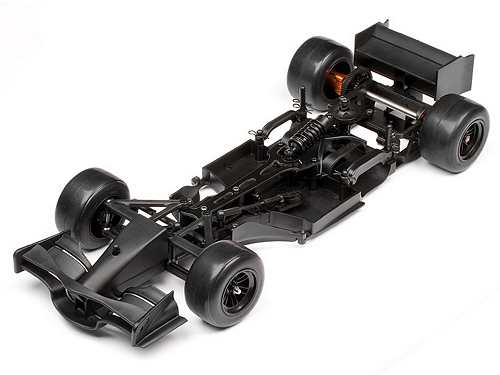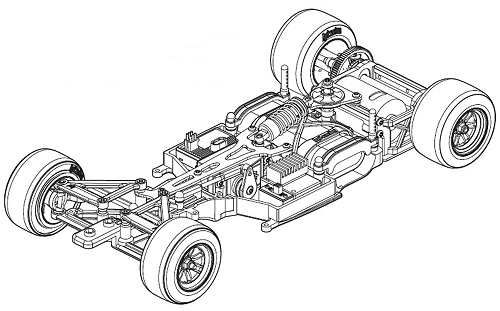

|
|
|


|
|
Maßstab 1:10 Elektro Formel 1 Car:
HPI F10 - # 102851 / # 102852 (Funkgesteuertes Modell Rezension)Geschichte + Informationen für der HPI F10::
Eingeführt von HPI (Hobby Products International) in 2009, das F10 Formula Ten Car Kit - # 102851 / # 102852 - ist auf einem Doppeldeck + T-Bar-Pod-Chassis ausgerichtet, wobei eine Schraubenfeder über ölgefüllten Dämpfern, Reibungsplatte, Getriebedifferential und einem vollständigen Satz Kugellager verwendet wird.
▼ Scrollen Sie für weitere Bilder ▼
|








|
|
|

★ HPI Racing F10 ★

★ HPI Racing F10 Chassis ★

|
Kauf eines gebrauchten ferngesteuerten Modells
|
|
Hersteller und Marken, katalogisiert und gelistet von RC-Scrapyard.
Derzeit sind die RC-Modell Hersteller, Marken und Distributoren die von uns abgedeckt werden: ABC Hobby, Academy, Acme Racing, Agama Racing, Amewi, Ansmann Racing, ARRMA, Team Associated, Atomic RC, Axial, AYK, Bolink, BSD Racing, Capricorn, Carisma, Carson, Caster Racing, Cen, Corally, Custom Works, Durango, Duratrax, ECX - Electrix, Exceed RC, FG Modellsport, FS-Racing, FTX, Fujimi, Gmade, GS-Racing, Harm, HBX, Helion, Heng Long, Himoto Racing, Hirobo, Hitari, Hobao, Hong-Nor, Hot Bodies, HPI, HSP, Intech, Integy, Jamara, JQ Products, Kawada, Kyosho, Losi, LRP, Maisto, Mardave, Marui, Maverick, MCD Racing, Megatech, Mugen, New Bright, Nichimo, Nikko, Nkok, Ofna, Pro-Pulse, Protech, PTI, RC4WD, Redcat Racing, RJ-Speed, Robitronic, Schumacher, Seben, Serpent, Smartech, Sportwerks, Step-Up, Tamiya, Team-C Racing, Team Magic, Thunder Tiger, Tomy, Top Racing, Traxxas, Trinity, Tyco, Vaterra RC, Venom, VRX Racing, WLToys, X-Factory, Xmods, Xpress, Xray, XTM, Yankee RC, Yokomo, ZD Racing und Zipzaps. |
|
Beratung und Information
Notizen Machen
Wenn alles, was Sie jemals tun ist, gehen bei Ihrem örtlichen Rennbahn jede Woche, dann ist dieser Artikel nicht für Sie. , Wenn Sie jemals auf Reisen rund um den unterschiedlichen Spuren im ganzen Land oder sogar die Welt, ist jedoch der Wert der sich Notizen zu offensichtlich.
|
|
Beratung und Information
Lagerdichtungen
Wenn Sie jemand mit einem Minimum an Erfahrung im RC fragen würde, werden sie Ihnen sagen, dass die beste Modifikation können Sie zu einem Grund RC-Modell zu machen, ist es, einen Satz Kugellager hinzuzufügen. |
|
RC-Modelle:
|
Radio & Motoren: |
Andere
Zubehör: |